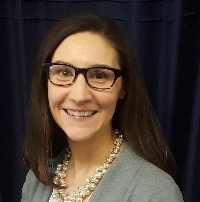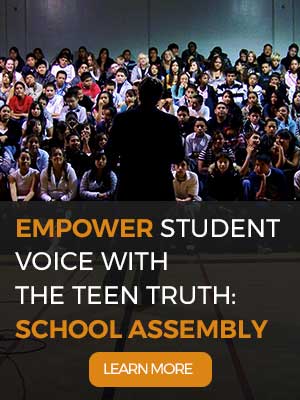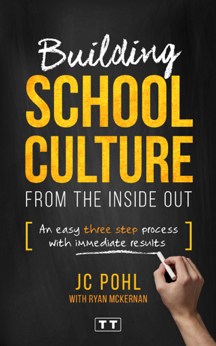Failure is Not an Option, But It Should Be:
Create Space for Innovation in Four Manageable Steps
You may have read the brain research that says students learn best when they analyze their mistakes and adapt their thinking. We have all heard the stories about Michael Jordan not making his high school freshman basketball team, or how many failed experiments Edison had before the light bulb. Failure is acceptable in many aspect of our culture. It’s even celebrated in the classroom as a learning tool. But does this acceptance ring true for teachers and administrators? Educators have been judiciously studying growth mindset, which tells us that we can all benefit from mistakes.
As educators, the mantra “failure is not an option” is constantly reinforced in overt and covert ways. We cannot leave any child behind. We are told time and time again that we must close the gap in student performance, that students are under performing, and that this is not acceptable. Could this fear of failure be creating a system that is afraid of innovation?
If a teacher or administrator finds an initiative that is not initially successful, little time is spent analyzing mistakes and deeply learning about why the failure occurred in the first place. We are not failing forward, because we are not allowing ourselves to productively struggle.
This struggle is the key to deep learning. We need to create environments where educators will take risks so our students can learn to take risks. That is the only way meaningful change will happen.
“We need to think about failure differently. I’m not the first to say that failure, when approached properly, can be an opportunity for growth. But the way most people interpret this assertion is that mistakes are a necessary evil. Mistakes aren’t a necessary evil. They aren’t evil at all. They are an inevitable consequence of doing something new (and, as such, should be seen as valuable; without them, we’d have no originality). And yet, even as I say that embracing failure is an important part of learning, I also acknowledge that acknowledging this truth is not enough. That’s because failure is painful, and our feelings about this pain tend to screw up our understanding of its worth. To disentangle the good and the bad parts of failure, we have to recognize both the reality of the pain and the benefit of the resulting growth.”
PIXAR co-founder, Ed Catmul.
Step 1 – Be Bold, Be Daring, and Think Big
I firmly believe that educators are some of the most brilliant minds in the world. Given resources and support, they can achieve anything. When asked, educators have innovative, motivating, and exciting ideas that can revolutionize learning in the classroom. All they need is support and permission. Usually, the answers to the tough questions are completely in reach of the minds closest to the issue. Harness the power of the people in your building by starting a discussion with them.
Step 2 – Make Risk Taking Safe by Supporting Innovation
It only takes one great idea to change the world. I like to think of the seed analogy. Many seeds are sown. Some land among thorns, some land on rocky ground. However, the seeds that grew are thrown onto ground that is eager to receive it and provided it with everything it needs to flourish. We should all be on the lookout for those seed ideas. Find those seeds, and provide them with a nurturing environment to help them grow.
Step 3 – Celebrate Small Steps Because Small Growth is Still GROWTH
Seeds don’t grow into trees overnight. Some days, seeds struggle but continue to grow. I know there is a great sense of urgency when it comes to the education of our students. But we cannot discount the patience it takes for real change to occur. If we celebrate success along the way, it makes the path easier (and more inspiring) to follow. Celebration keeps the work going and validates the hard work that is taking place to make common goals reality.
Step 4 – Don’t Abandon Too Soon, but Don’t Fail for Too Long
Innovation isn’t limited to a start and finish line. There are checkpoints, twists, and turns along the way. These are opportunities to assess progress, receive feedback, and adjust. There are mountains to climb and obstacles to overcome. If we abandoned the race after climbing the first hill, we will have deprived ourselves of the momentum we could have gained if we had pressed on toward the next summit. We must monitor our implementation and adjust constantly before we assess the final lesson.
So How Do We Begin?
Begin by opening the door to new ideas. Ask the experts (the teachers of course!) and use this questionnaire to investigate the new and innovative ideas that are already percolating in your building. Ask questions, gather information, but most of all don’t be afraid of failure, because failure should always be an option.

Sarah Hayden
Instructional Coach, TEEN TRUTH
Contact Us
The average Director of Activities (also know as Student Council Advisors) lasts for 3.5-years.
Let’s take a moment to think about the significant implications this statistic offers in terms of building school culture.
Honestly, if every 3.5-years a school is hiring a new Director of Activities how can it possibly create a school culture that “nobody ever wants to leave”?
The answer is: IT CAN’T!
If we want to build great schools with amazing culture we have to overcome this current trend and break the 3.5-year cycle. Director of Activities have to be a solid fixture on every school campus and a person that lays the foundation for school culture to be built upon.
3 Reasons Why Directors of Activities Quit
LACK OF ENERGY
Directors of Activities simply get burnt-out. They wear so many different hats and have so many things happening that they eventually run out of energy.
LACK OF COMMITTMENT
Directors of Activities have a HUGE heart for students and developing leaders. Their heart for students is the very thing that draws them to the position in the first place. However, one of the most frustrating issues with being for an Activities Director is having student leaders start off so strong and promising at the beginning of the year and then after a few short months they fade into obscurity. Thus leaving the Activities Director with a small army of students that end up doing EVERYTHING!
LACK OF SUPPORT
Directors of Activities will eventually leave because of a lack of support from staff and administration. Often times when Activities Directors are not supported by their staff and administration they will go looking for “greener grass”. Without support from these groups of people, it’s nearly impossible to be a successful Activities Director.
3 Ways to Break this Trend
PURPOSE
It is my belief that Activities Directors need to know the PURPOSE for why the do what they do! Our purpose has to be something that is bigger than us. It has to be something that is greater than self. For me purpose = energy! I am energized by the fact that I am chasing after something much greater than myself. And therefore, I tap into a different source of energy.
PASSION
Often times our student leaders begin to fade as the year moves along simply because we have them doing “tasks” and not plugging into their PASSION. In order for student leaders to stay committed we need to provide them with opportunities to follow their passion. I believe a huge part of this is the time we spend actually developing student leaders. For years I focused all of my time and energy on creating amazing events! Now, I spend my time developing student leaders and helping them follow their passion. My thought is that if I develop strong student leaders who are engaged in activities they are passionate about, then the by-product will be amazing activities!
PEOPLE
As humans we have a tendency to make things about ourselves. Once I realized that leadership starts with me, BUT IT’S NOT ABOUT ME, everything began to change in my career. Leadership is the process of moving yourself to the shadows and putting others in the spotlight. We need to make leadership about others. At the end of the day leadership is about PEOPLE, PEOPLE, and PEOPLE!
I hope together we can break this trend of the shortened lifespan of an Activities Directors and Student Council Advisors. My hope is that we can build better schools and culture by investing in and supporting Directors of Activities so that they can help reach out and impact lives each and everyday!

Sarah Hayden
Instructional Coach, TEEN TRUTH





